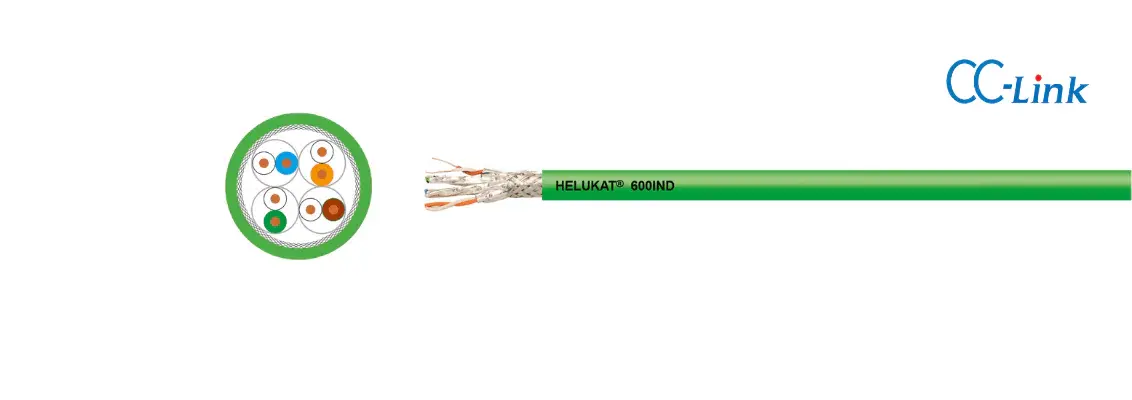What is CC-Link?
In the realm of industrial automation, an abbreviation 'CC-Link' has come to symbolize efficient communication and control. But what precisely is CC-Link, and how has it evolved over time? Let's delve into this!

The Emergence of CC-Link
CC-Link, which stands for Control and Communications Link, made its debut in 1996 thanks to Mitsubishi. Originally designed to meet the needs of automation systems in Asia, CC-Link transitioned into an open network in 1999 due to high customer demand. This pivotal move allowed third-party vendors to develop interfaces and accessories for the system. To further support its development and enhancement, the CC-Link Partner Association (CLPA) was established.
Diversity in CC-Link Networks
CC-Link comes in different versions, each carefully designed for specific uses. The main types include:
- Standard CC-Link: This network operates at a data rate of 10 Mbit/s and relies on the RS-485 standard. It seamlessly facilitates the transmission of both control data and information.
- CC-Link/LT: Boasting a transfer speed of 2.5 Mbps, CC-Link/LT is a bit-oriented network. In this architecture, data is transmitted at the bit level, ensuring precise connectivity between actuators and sensors. It simplifies cable routing and reduces the effort required for device connections to a control cabinet.
- CC-Link Safety: Built upon the standard CC-Link, this network introduces an additional safety layer within the protocol. It empowers the detection of communication errors that may cause downtime. Both standard and safety devices can be interconnected, provided a safety master module is present.
- CC-Link IE: When it comes to CC-Link IE, which operates on the foundation of Industrial Ethernet, the choice of cables offers greater flexibility. Many standard CAT5e Ethernet cables are compatible with this network. However, it's crucial to bear in mind that Ethernet cables can vary in quality and performance. Therefore, it's a prudent choice to opt for cables from manufacturers endorsed by the CC-Link Partner Association (CLPA), like HELUKABEL. These cables have been rigorously tested and certified to ensure compatibility with the CC-Link IE network, meeting all essential performance criteria.
Cabling for CC-Link
Standard CC-Link
For standard CC-Link, it is of paramount importance to employ a specially designed cable with a characteristic impedance of 110 Ω. This cable's engineering ensures compatibility with the network's electrical characteristics while minimizing signal reflections and losses. Furthermore, core identification in white, blue, and yellow adheres to CC-Link's standardized color-coding scheme. It is imperative not to use conventional data cables, as they fail to meet the high-performance standards mandated by CC-Link.
CC-Link IE
In the context of CC-Link IE, which relies on Industrial Ethernet, cable selection becomes more versatile. A multitude of conventional CAT5e Ethernet cables are suitable for this network. Nevertheless, it is prudent to opt for cables from manufacturers endorsed by the CC-Link Partner Association (CLPA). Such cables have undergone rigorous testing and have been certified to be fully compatible with the CC-Link IE network, meeting all the essential performance criteria.
Applications
While CC-Link is primarily used in Asia, its utilization has transcended international borders to enable automated data transfer between machines worldwide. However, it is noteworthy that PROFINET cables are the prevailing choice in European industrial settings.
In short, CC-Link is a versatile and strong system for connecting machines and devices. It can be used in many different ways, like controlling production lines, keeping an eye on complicated processes, or making different systems work together smoothly. CC-Link is well-known for being reliable in industrial automation. Its ability to adapt to different networking needs has made it popular worldwide, helping businesses run more efficiently and ensuring data is transmitted reliably in various industries.
CC-Link Certified Cables from HELUKABEL
CC-Link
| Type | Part no. | Application |
| HELUKABEL® CC-Link BUS | 800497 | fixed installed, random movement |
CC-Link IE
| Type | Part no. | Application |
| HELUKAT® 200 4x2xAWG24/1 PVC | 81610 | fixed installation, Cat5e |
| HELUKAT® 500IND 4x2xAWG22/1 PVC | 803693 | fixed installation, Cat6A |
| HELUKAT® 600 4x2xAWG23/1 FRNC | 80810 | halogen-free, fixed installation, Cat7e |
| HELUKAT® 600IND 4x2xAWG23/1 PUR | 801197 | fixed installation, Cat7e |
| HELUKAT® 600S 4x2xAWG 24/7 PUR | 805614 | dragchain, Cat7 |
More on what we offer you can find here .
Contact us!
| E-mail: info@helukabel.se | HELUKABEL AB |
| Spjutvägen 1 | |
| Phone: +46 8 55 77 42 80 | 175 61 Järfälla |

